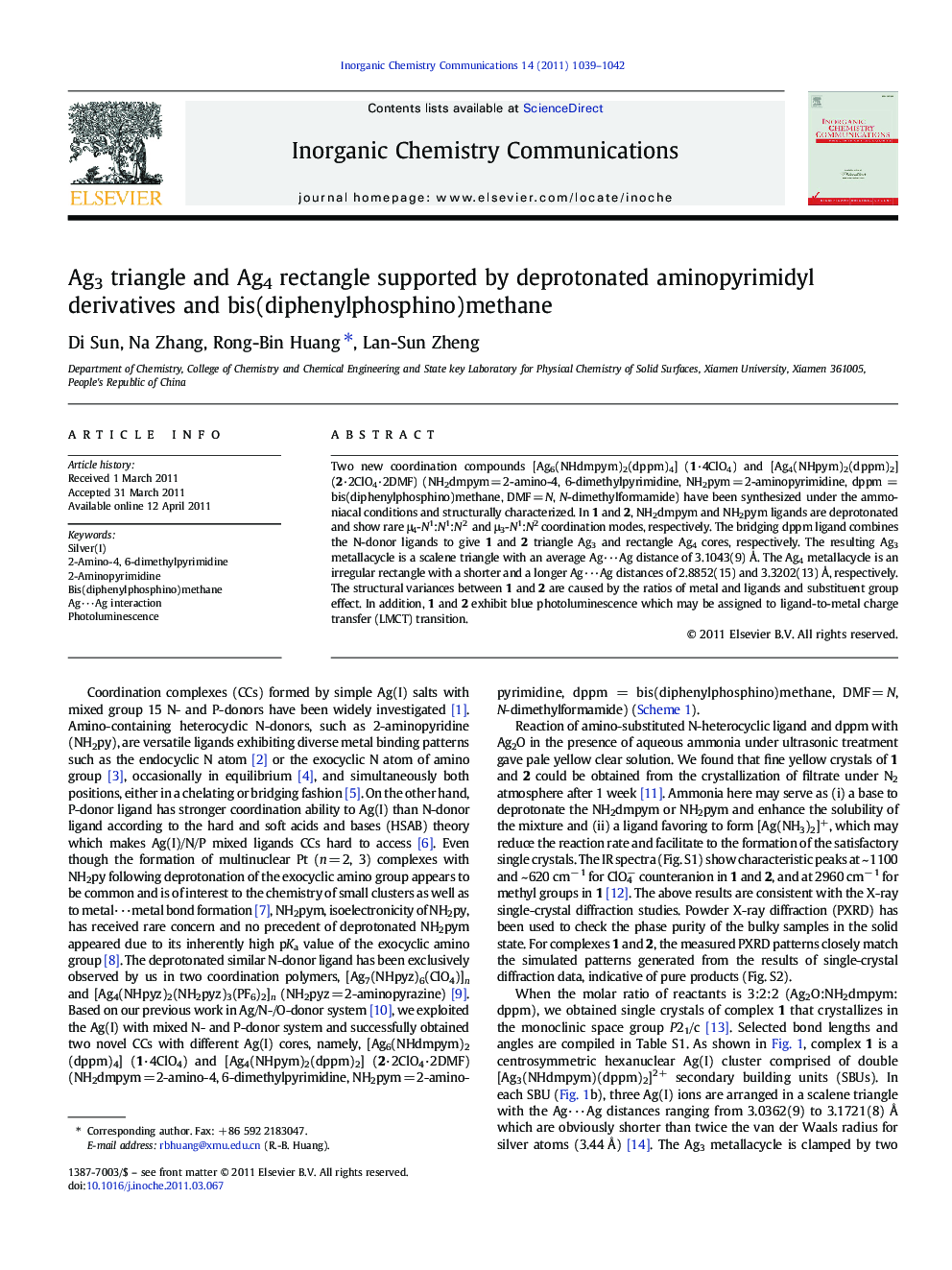| Article ID | Journal | Published Year | Pages | File Type |
|---|---|---|---|---|
| 1302757 | Inorganic Chemistry Communications | 2011 | 4 Pages |
Two new coordination compounds [Ag6(NHdmpym)2(dppm)4] (1·4ClO4) and [Ag4(NHpym)2(dppm)2] (2·2ClO4·2DMF) (NH2dmpym = 2-amino-4, 6-dimethylpyrimidine, NH2pym = 2-aminopyrimidine, dppm = bis(diphenylphosphino)methane, DMF = N, N-dimethylformamide) have been synthesized under the ammoniacal conditions and structurally characterized. In 1 and 2, NH2dmpym and NH2pym ligands are deprotonated and show rare μ4-N1:N1:N2 and μ3-N1:N2 coordination modes, respectively. The bridging dppm ligand combines the N-donor ligands to give 1 and 2 triangle Ag3 and rectangle Ag4 cores, respectively. The resulting Ag3 metallacycle is a scalene triangle with an average Ag···Ag distance of 3.1043(9) Å. The Ag4 metallacycle is an irregular rectangle with a shorter and a longer Ag···Ag distances of 2.8852(15) and 3.3202(13) Å, respectively. The structural variances between 1 and 2 are caused by the ratios of metal and ligands and substituent group effect. In addition, 1 and 2 exhibit blue photoluminescence which may be assigned to ligand-to-metal charge transfer (LMCT) transition.
Graphical abstractTwo novel coordination compounds [Ag6(NHdmpym)2(dppm)4] (1·4ClO4) and [Ag4(NHpym)2(dppm)2] (2·2ClO4·2DMF) (NH2dmpym = 2-amino-4, 6-dimethylpyrimidine, NH2pym = 2-aminopyrimidine, dppm = bis(diphenylphosphino)methane, DMF = N, N-dimethylformamide) were synthesized and structurally characterized. The bridging dppm ligand combines the N-donor ligands to give 1 and 2 triangle Ag3 and rectangle Ag4 cores, respectively. Moreover, the emission behaviors of them were discussed.Figure optionsDownload full-size imageDownload as PowerPoint slideResearch Highlights► Two novel silver coordination compounds were synthesized and characterized. ► The structures of these complexes were confirmed by X-ray crystallography. ► NHdmpym and NHpym show rare μ4-N1:N1:N2 and μ3-N1:N2 coordination modes, respectively. ► The structural diversity as well as the photoluminescent properties were also discussed.
